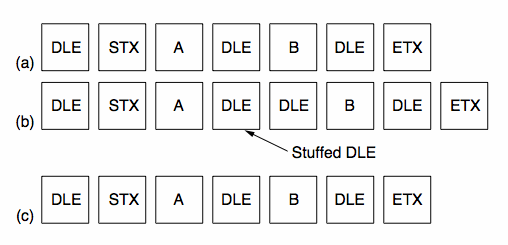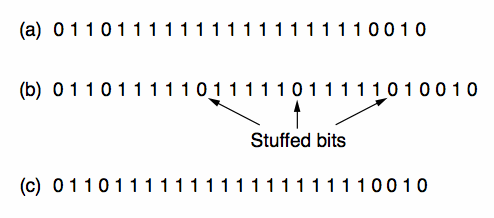

|
CITS3002 Computer Networks |
| ← prev | next → |  CITS3002
CITS3002 |
 help3002
help3002 |
 CITS3002 schedule
CITS3002 schedule |
|||
How Data is Placed in Frames, continuedTo overcome synchronization problems, special byte sequences are often used to prefix and suffix (envelope) the data. As these special bytes may themselves be required data we must "escape" their special meaning (particularly true for "binary" data such as floating point numbers, executables, JPGs and MP3s).
This process is termed byte stuffing,
using DLE=0208, STX=0028, ETX=0038.
Consider the following example, transmitting 3 bytes: [A, DLE, B]

A lower-level approach, bit-stuffing, overcomes the reliance on using the ASCII codes. Each frame is now enveloped in pairs of "flag" patterns 01111110.

If this flag pattern appears in the data,
the stuffed sequence 011111010 is transmitted.
CITS3002 Computer Networks, Lecture 2, The Physical Layer, Errors detection and correction, p6, 6th March 2024.
|